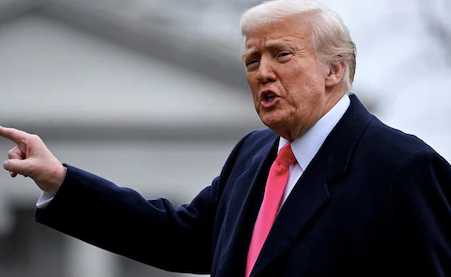
U.S. President Donald Trump has made global headlines on June 24 by declaring on Truth Social, “It was my great honour to destroy all Iranian nuclear facilities & capability, and then, stop the war!” The bold statement came just days after the United States and Israel launched a coordinated aerial campaign targeting Iran’s nuclear and missile infrastructure. They followed escalating tensions in the Middle East. His dramatic announcement has triggered many reactions from intelligence agencies, global leaders, and international observers.
Trump framed the military action as a definitive blow to Iran’s nuclear ambitions, according to early assessments from the U.S. intelligence agencies, particularly the Defense Intelligence Agency. They have suggested a more measured outcome. According to different sources within the intelligence community, several key Iranian facilities were damaged, and the nuclear program has likely only been delayed by a few months rather than completely neutralized. Uranium stockpiles are some that are hidden in fortified underground locations, which are believed to have remained untouched. This contradicts Trump’s claims of having “destroyed all” nuclear capabilities and has fueled criticism from other international analysts and opposition leaders at home.
The political implications of Trump’s statement are vast. The international stage suggests that his assertion of “destroying” Itan’s nuclear capability without international consensus or IAEA verification raises serious concerns about unilateral military action.
European leaders have called for de-escalation and immediate diplomacy, stressing that any long-term peace must be grounded in verified arms control and multilateral engagement. The International Atomic Energy Agency (IAEA), which is tasked with monitoring nuclear programs globally, has yet to confirm the full extent of the damage or compliance from Iran post-strike.
Trump’s declaration has rekindled debates about presidential war powers and executive overreach. There are several U.S. lawmakers who have expressed concerns over the lack of congressional approval for such a sweeping military operation. This is one with the potential to ignite a larger regional conflict. Critics are drawing parallels to 2003 Iraq war. Critics caution against the hasty intervention based on insufficient or exaggerated intelligence.
Iran, for its part, has strongly rejected Trump’s rhetoric. Supreme Leader Ayatollah Khamenei dismissed the claim as “humiliating” and part of a long-standing American effort to undermine Iranian sovereignty. Tehran maintains that its nuclear program is for peaceful purposes, and its foreign ministry has vowed retaliation if further strikes are carried out. Iranian state media has begun portraying the attacks as failures, insisting that the country retains much of its nuclear infrastructure.
Strategically, Trump’s framing of the operation as both a military success and a peacekeeping mission reflects his long-standing pattern of aggressive action followed by calls for de-escalation. By claiming to have both destroyed Iran’s capabilities and ended the conflict, Trump positions himself as a decisive leader. However, this narrative may prove premature if Iran resumes its nuclear activity or if retaliatory attacks escalate.
In conclusion, Trump’s statement appears to be more political theatre than confirmed military fact. While the U.S. and its allies may have achieved significant tactical success, the broader picture remains complex and unsettled. Without IAEA verification and diplomatic engagement, the region risks sliding back into conflict. For now, Trump’s claim of “destroying all” may serve more as a campaign soundbite than a strategic reality. Keep Reading Questiqa.com for more news.

